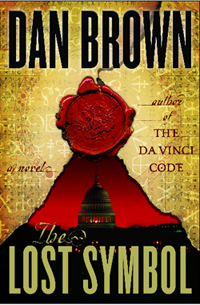 Robert Langdon is back, along with his never-ending knowledge of secret societies, architecture, art history, symbology and dead languages. (Okay, he was actually back last year in Dan Brown’s “The Lost Symbol,†but as of last month he’s been available in paperback.)
Robert Langdon is back, along with his never-ending knowledge of secret societies, architecture, art history, symbology and dead languages. (Okay, he was actually back last year in Dan Brown’s “The Lost Symbol,†but as of last month he’s been available in paperback.)
As with Brown’s other books involving Langdon, “Angels and Demons†and “The Da Vinci Code,†Langdon is once again sent on adventures that have him chasing after lost artifacts and world-changing secrets through a dizzying array of history-rich locations.
The Freemasons play the role of the secret-keepers this time, hiding something referred to throughout history as “The Ancient Mysteries.â€Â Langdon once again finds himself working alongside a smart, pretty female counterpart, this time in the form of Katherine Solomon, a specialist in Noetic Science, the study of the human mind to physically affect our physical surroundings.
Langdon’s story is centered in Washington D.C., and is rich in the history of our nation’s capital’s most famous buildings, including the Smithsonian Institution complex and The Capitol Building.
Langdon’s efforts to find “The Ancient Mysteries†are propelled by his desire to save the life of his friend Peter Solomon, Katherine’s brother, who is being held captive by a fully tattooed madman, Mal’akh.
Brown’s storytelling is captivating, with well-placed history lessons to break up the fast-paced action. His knowledge of history is, as usual, astounding, and the book is entertaining as well as informative. “The Lost Symbol†offers many twists and turns, with many unexpected surprises along the way.
If there’s one disappointing thing about this book it’s that the large mystery that promises to be solved is, as with his other books, anti-climactic and more obvious than expected.
But, I suppose one can’t expect life’s mysteries to be solved at the end of a novel.



